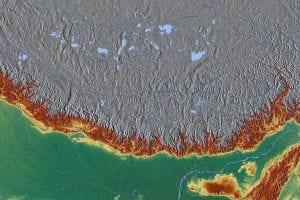According to a recent article published by the University of California San Francisco, Pelizaeus-Merzbacher disease (PMD) is a rare neurological disease affecting young boys. PMD fatalities may occur before the child reaches his tenth birthday.
About PMD
PMD is a rare demyelinating disorder. The origin of the disease is found in proteolipid protein 1 (PLP1) gene mutations.
PMD is a progressive neurological disorder of myelin formation causing severe neurological disability by destroying the brain’s white matter. It is one of a group of fifty rare genetic disorders called leukodystrophies. A few examples are Krabbe disease, Niemann-Pick disease, Childhood ataxia with central nervous system hypomyelination, and Canavan disease.
The disease is classified according to its clinical features, some of which may overlap. The first is the more common classic type which may extend into adulthood and the second is the more severe connatal type, which begins at birth.
Patients may present symptoms such as difficulty breathing and weakness. One of the major mechanisms of PMD is the disturbance of myelin, the fatty layer that covers nerve fibers. Myelin promotes the transmission of nerve impulses and insulates nerve fibers.
Stem Cells Serve a Dual Purpose
A team of international researchers has been using patient-derived stem cells in two of their PMD studies to develop therapies for the disease.
The therapy involves transplanting neural stem cells directly into the patients’ brains. Thus far the reports have been encouraging.
The studies have been published in Cell Stem Cell and Stem Cell Reports.
Implanting Neural Stem Cells in the Brain
The 2010 first-in-human effort conducted by UCSF professors David Rowitch and Nalin Gupta was heralded as ground-breaking. The study involved implanting neural stem cells into the brain of four young boys under five years of age who had severe PMD.
The primary goal of this Phase 1 trial was to test long-term safety. Another goal was achieved through brain imagining. The researchers evaluated the patient’s white matter to see if myelin could be restored in their brain.
The team observed significant changes in an MRI scan during a twelve-month follow-up. There was every indication that myelination occurred in areas of the transplantation. No adverse events were observed.
The team followed up again five years later. All four subjects experienced only minimal adverse events. The researchers were encouraged when they observed continued myelination in two of the boys in the study.
However, two patients had immunological reactions to the neural stem cells. This prompted the team to consider immunosuppressive therapies for future trials in order to prevent rejection by a patient’s immune system.
The Cell Stem Cell Study
Professors Marius Wernig and David Rowitch of Stanford University School of Medicine began their search for therapies to counteract myelin loss.
The team, led by Hiroko Nobuta, Ph.D. of UCSF collected skin cells from the young PMD patients. Several of the boys had been participants in the transplantation study published by Stem Cell Reports.
The team utilized a technology called induced pluripotent stem cell (iPSC) to convert the skin cells to brain cells which were studied in vitro (in test tube or culture dish). iPSCs are normally taken from skin or blood tissues and genetically transformed into embryonic stem cells.
Dr. Wernig introduced the procedure in 2007 when he reprogrammed mouse skin cells into pluripotent stem cells. By creating these functional neurons, the researchers are able to study other neurological disorders including autism and schizophrenia.
The Discovery
Upon examining the newly-formed brain cells, the team found that iron toxicity is causing the death of oligodendrocytes (myelin-producing cells). This development may explain the myelination failure during the brain development of PMD patients.
About Deferiprone
It was also discovered that if FDA-approved deferiprone, an iron-chelating agent, is used to remove excess iron, then the PMD oligodendrocytes can be protected. Deferiprone reduces iron concentration in the liver and levels of serum ferritin.
Deferiprone was also found to boost myelin formation in the cells that were grown in both mouse models and in vitro.
Mice with the PLP1 mutation were injected with the drug. These mice would normally have died about thirty-five days after birth but the drug had stimulated new myelin in the brain. There was a slight increase in overall survival in the mice.
The team is now planning additional clinical trials to study deferiprone’s potential to slow or even stop PMD progression.
What are your thoughts about these first-in-human trials?

.jpg)





